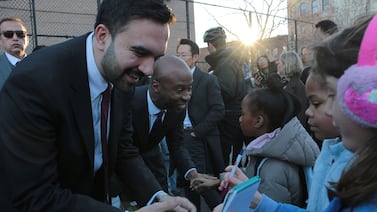For several weeks, President Trump has said that schools that didn’t reopen their buildings this fall could risk losing funding. Now, Senate Republicans have introduced a mechanism to make that a reality.
Their bill, which kicks off a final round of negotiations over an additional coronavirus stimulus package, includes $70 billion for K-12 public and private schools. But two-thirds of that money would only be accessible to schools if they offer some in-person instruction — something that schools in many parts of the country have decided is unsafe to do for now.
The reopening provision is a testament to the economic and political importance Republican lawmakers attach to reopening school buildings, and sets up school schedules to continue to serve as a flashpoint in the weeks ahead. It also may prove unpopular: national surveys of parents show that most remain wary of their children returning to schools while the country fails to control the coronavirus. The Centers for Disease Control and Prevention itself warned last week that schools in “hot spots” may not be able to reopen.
Democrats have indicated they will strongly oppose tying funds to reopening, and education groups immediately criticized the Republican proposal, which was released Monday. “We are deeply concerned that the bill would seek to tie much-needed assistance to a federal definition of school building reopening. Student health and safety is the most local of concerns,” said Carissa Moffat Miller, executive director of the Council of Chief State School Officers.
“It is important to know that nearly all schools will reopen in some way this fall, whether in person, remotely or a combination of both. Additional federal resources are critical to serve students in every learning environment,” she said.
The funding would be distributed like this: The federal education department would first send about $70 billion to states. One-third of that money could go to schools regardless of whether they planned to physically reopen. But another two-thirds of the money would only be distributed if the school district, charter school, or private school planned to hold some form of in-person instruction.
Schools offering in-person learning for at least half of their students and for at least half of the school week would be eligible for their full allotment. Funding would be reduced for schools offering in-person learning to fewer students or for less time.
Public schools that open physically would also have some more leeway around how they spend their money. The money that states can distribute to schools right away must be used to cover costs related to getting schools open and responding to the pandemic, while the larger pot of money tied to schools’ reopening plans could be used by school leaders for anything “to address the needs of their individual schools.”
All told, the amount of money earmarked for schools is comparable to what was included in the bill House Democrats passed in May. But there is a major difference: while the House Democrats’ proposal included $500 billion to help fill state coffers, the Republican bill does not provide anything for state and local budgets, which are the primary funders of public schools.
That could mean that while schools get an infusion of federal dollars, they will face down other budget cuts that effectively cancel them out. That already happened in some states with the CARES Act, the earlier relief legislation that included money for schools.
“Without some federal aid for state and local budgets, we can expect millions more layoffs,” said American Federation of Teachers president Randi Weingarten.
Another key difference between the new proposal and the House bill is support for private schools. Under the Republicans’ bill, states must set aside some of the $70 billion pot to be sent directly to private schools; the amount would be determined by the share of students who attend a private school, which is 10% nationwide.






